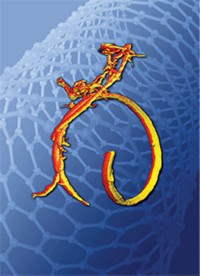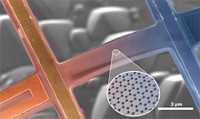Advertisement
Grab your lab coat. Let's get started
Welcome!
Welcome!
Create an account below to get 6 C&EN articles per month, receive newsletters and more - all free.
It seems this is your first time logging in online. Please enter the following information to continue.
As an ACS member you automatically get access to this site. All we need is few more details to create your reading experience.
Not you? Sign in with a different account.
Not you? Sign in with a different account.
ERROR 1
ERROR 1
ERROR 2
ERROR 2
ERROR 2
ERROR 2
ERROR 2
Password and Confirm password must match.
If you have an ACS member number, please enter it here so we can link this account to your membership. (optional)
ERROR 2
ACS values your privacy. By submitting your information, you are gaining access to C&EN and subscribing to our weekly newsletter. We use the information you provide to make your reading experience better, and we will never sell your data to third party members.
Analytical Chemistry
Lightweight Atoms Imaged
New method renders conventional instruments capable of 'seeing' hydrogen atoms
by Mitch Jacoby
July 21, 2008
| A version of this story appeared in
Volume 86, Issue 29

IF YOU THINK that imaging individual hydrogen atoms in a transmission electron microscope (TEM) is impossible, think again. Researchers in California report success in that endeavor, long considered extremely difficult at best. What's more, the scientists conducted their imaging experiment with what they describe as a "run of the mill" microscope (Nature 2008, 454, 319).
One of the keys to success in the new microscopy method is the nature of the material that supports the imaged atoms. The research team, which includes University of California, Berkeley, physics professor Alex Zettl, postdoc Jannik C. Meyer, and coworkers, devised a simple method of preparing and handling clean samples of graphene, one-atom-thick sheets of carbon, that are transparent under the team's imaging conditions.
Then, by using graphene as a support material, the researchers directly imaged individual hydrogen and carbon atoms that adsorbed onto the film from residual gases in the TEM vacuum system. They also recorded images of adsorbed carbon chains. In addition, the Berkeley team recorded videos that capture the evolution of the lightweight atomic and molecular entities in real time. These advances may lead to new ways of directly observing reaction dynamics of complex molecules.
The difficulty in seeing individual atoms in a TEM is that single atoms, and in particular single atoms of low atomic mass, barely scatter the TEM's electron beam. The intensity of the scattering event is so minuscule that the details, which contain the imaging information, are typically lost as noise that is indistinguishable from the analytical signal.
Microscopists have made enormous advances with TEM in recent years, improving the sensitivity, resolution, and signal-to-noise ratios. Atomically resolved images, often showing the locations of individual metal atoms, are now common (C&EN, June 23, page 31).
Nonetheless, lightweight atoms, such as the ones that make up organic molecules, still present a considerable imaging challenge. And hydrogen atoms were all but impossible to image, according to conventional wisdom in electron microscopy.
Even Zettl acknowledges being surprised by his team's feat. "Had you asked me a couple of years ago, I would have said 'maybe it's possible to see hydrogen with a state-of-the-art TEM, but certainly not with a run-of-the-mill instrument.' " But that's exactly the kind of TEM the group used.
Commenting on the work in Nature, John Silcox, a professor of applied and engineering physics at Cornell University, notes that graphene is a "superb" support material in many ways. In addition to being transparent under the reported imaging conditions, graphene is not easily damaged by the TEM's beam, he points out. And, he continues, graphene effectively traps and immobilizes atoms and molecules that land on its surface. As such, the Berkeley team was able to record multiple images of a given structural feature and benefit from data-averaging techniques.
"Occasionally, a paper is published that opens lines of investigation previously thought impossible," Silcox writes. "This is just such a paper."
Other microscopy experts share Silcox' enthusiasm for the study's significance. Laurence D. Marks, a professor of materials science at Northwestern University, remarks that "this is in all probability a very important paper which may well stand the test of time as the first imaging of light atoms."







Join the conversation
Contact the reporter
Submit a Letter to the Editor for publication
Engage with us on Twitter